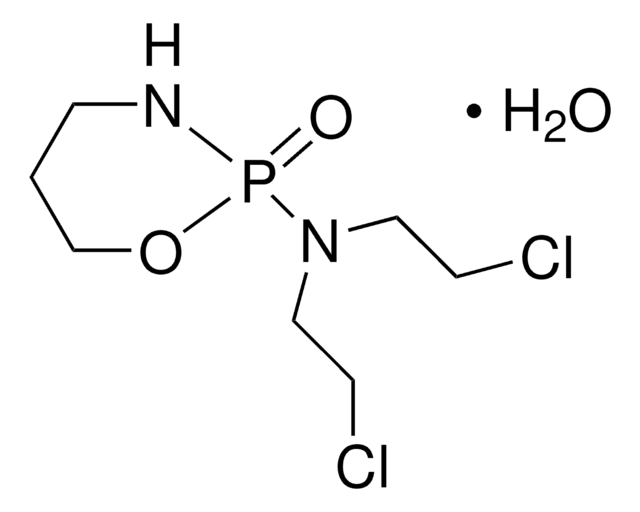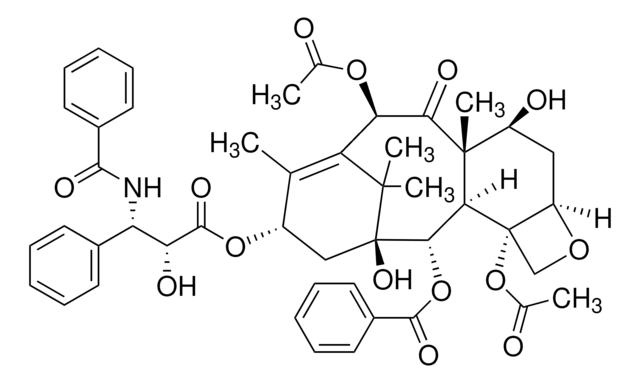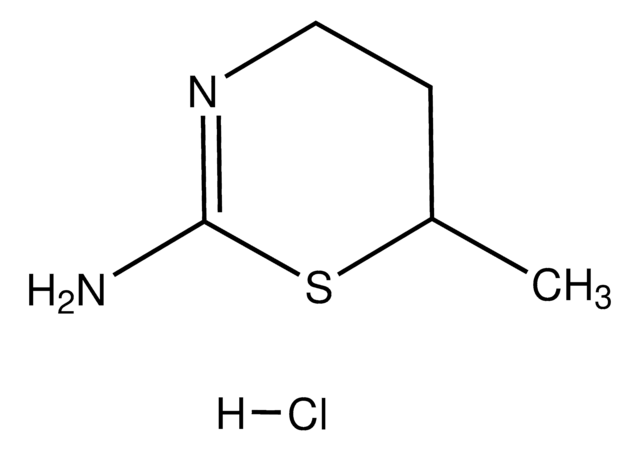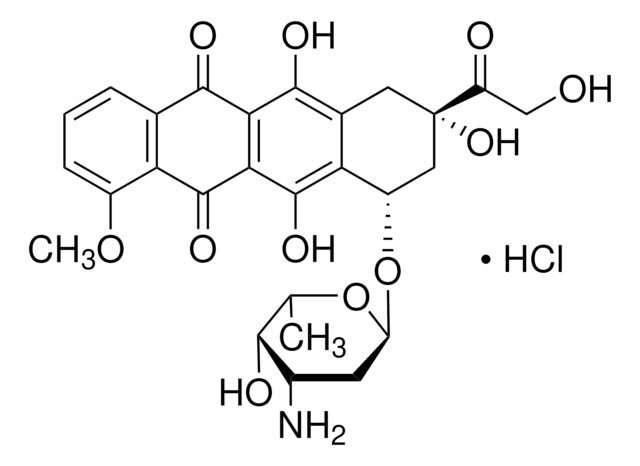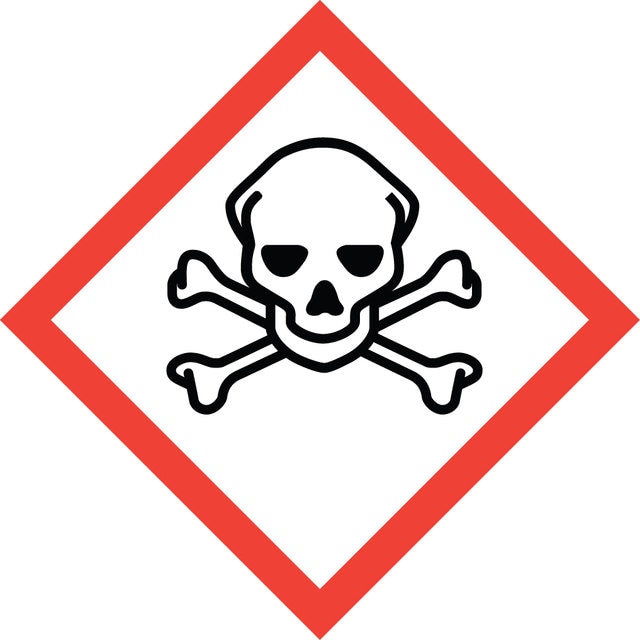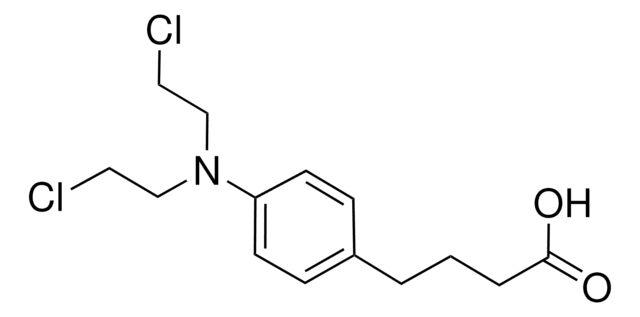C0768
Cyclophosphamide monohydrate
bulk package
동의어(들):
2-[Bis(2-chloroethyl)amino]tetrahydro-2H-1,3,2-oxazaphosphorine 2-oxide, Cytoxan
About This Item
추천 제품
Quality Level
분석
97.0-103.0% (HPLC)
양식
powder
mp
49-51 °C (lit.)
저장 온도
2-8°C
SMILES string
[H]O[H].ClCCN(CCCl)P1(=O)NCCCO1
InChI
1S/C7H15Cl2N2O2P.H2O/c8-2-5-11(6-3-9)14(12)10-4-1-7-13-14;/h1-7H2,(H,10,12);1H2
InChI key
PWOQRKCAHTVFLB-UHFFFAOYSA-N
유전자 정보
human ... ALDH1A1(216) , ALDH1B1(219)
유사한 제품을 찾으십니까? 방문 제품 비교 안내
일반 설명
애플리케이션
- to test its antitumor effect on TC-1 tumor cells
- as a component of multidrug solution for isolation of resistant human burkitt lymphoma cell line
- in testing antitumor immunity in mouse tumor cell lines
생화학적/생리학적 작용
특징 및 장점
신호어
Danger
유해 및 위험 성명서
Hazard Classifications
Acute Tox. 3 Oral - Carc. 1B - Muta. 1B - Repr. 1A
Storage Class Code
6.1C - Combustible acute toxic Cat.3 / toxic compounds or compounds which causing chronic effects
WGK
WGK 3
개인 보호 장비
Eyeshields, Faceshields, Gloves, type P3 (EN 143) respirator cartridges
이미 열람한 고객
문서
We presents an article on ABC Transporters and Cancer Drug Resistance
관련 콘텐츠
Apoptosis, or programmed cell death (PCD), is a selective process for the removal of unnecessary, infected or transformed cells in various biological systems. As it plays a role in the homeostasis of multicellular organisms, apoptosis is tightly regulated through two principal pathways by a number of regulatory and effector molecules.
n proliferating cells, the cell cycle consists of four phases. Gap 1 (G1) is the interval between mitosis and DNA replication that is characterized by cell growth. Replication of DNA occurs during the synthesis (S) phase, which is followed by a second gap phase (G2) during which growth and preparation for cell division occurs. Together, these three stages comprise the interphase phase of the cell cycle. Interphase is followed by the mitotic (M) phase.
Chromatograms
application for HPLC자사의 과학자팀은 생명 과학, 재료 과학, 화학 합성, 크로마토그래피, 분석 및 기타 많은 영역을 포함한 모든 과학 분야에 경험이 있습니다..
고객지원팀으로 연락바랍니다.